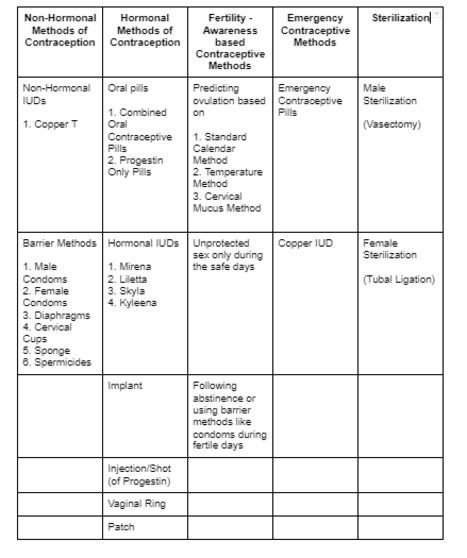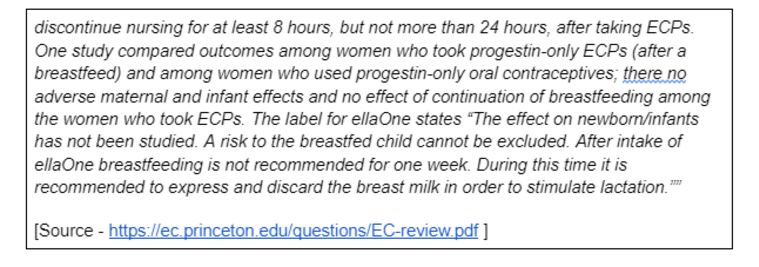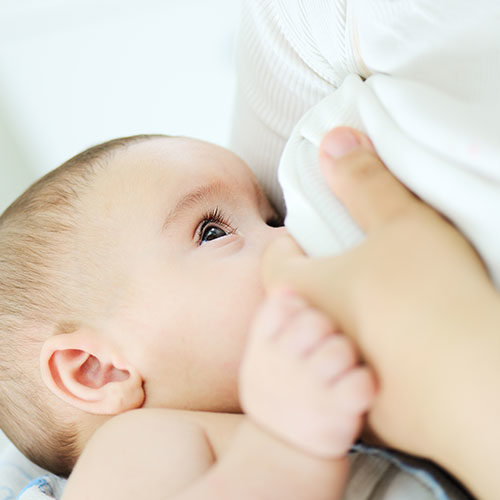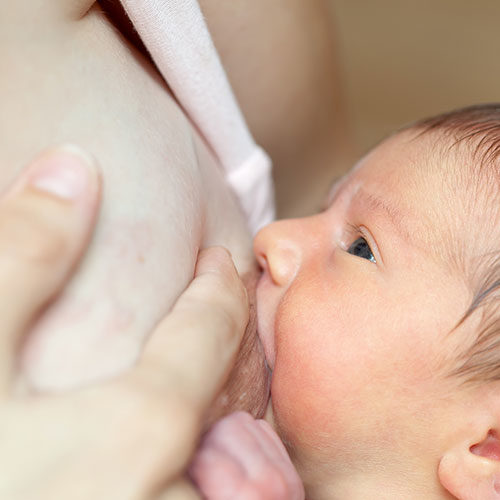While breastfeeding do I need to additionally consume contraceptives to prevent fertility?
Return of Postpartum Fertility:
For women who are not breastfeeding, periods can return as early as 6-8 weeks postpartum. For women who are combi feeding, the return of the period could be a little later. However, for the women who are exclusively breastfeeding their baby, the periods usually return between 9 and 18 months postpartum. Some mothers have even reported the return of their periods as late as 2 yeast and beyond.
Fertility precedes periods. It means that a woman is fertile during ovulation, which occurs before the period. Thus, a woman can conceive postpartum, before having her first period if she has unprotected sex while ovulating before the first period. This is why a discussion on contraception is crucial not just after, but even before getting the periods.
Different Methods of Contraception:
There are different types of contraceptive methods viz. hormonal methods, non-hormonal methods, fertility awareness-based methods, emergency contraceptive methods, and sterilization.

Breastfeeding as a Contraceptive Method ( Lactation Amenorrhea ):
Breastfeeding itself can be used as a very effective contraceptive method. However, it is important that all of the 3 conditions mentioned below are met stringently.
- The baby is less than 6 months old.
- The baby is exclusively breastfed (no water, no formula, no pacifier) with intervals between nursing sessions lasting no longer than 3-4 hours during the day and 5-6 hours during the night.
- The mother’s periods have not returned and she has had no vaginal bleeding (not even spotting) after the initial flow of lochia (lasting until 2-4 weeks postpartum) is over.
When all of the above conditions are met, a breastfeeding woman may use Lactation Amenorrhea (LAM Method) for contraception. It is important to note that the failure rate of this method is less than 2%, which is about the same as condoms. However, it is also important to consider that when a condom fails, it is most likely quite noticeable which provides an opportunity to take immediate actions in order to prevent pregnancy. But when LAM fails, the only way to know about it is the detection of pregnancy.
Other Breastfeeding Friendly Contraceptive Methods:
- Non-hormonal methods are most breastfeeding-friendly as they do not interfere with the hormonal mechanism that’s responsible for making breast milk. Therefore, all the barrier methods are considered to be most breastfeeding-friendly. The Copper T is a non-hormonal IUD that is over 99% effective. But, copper can trigger an inflammatory response in the body which can lead to heavier periods and increased menstrual cramps.
2. Fertility – awareness-based contraceptive methods are useful only after regular periods return. Before that, these methods cannot be used.
3. If a breastfeeding woman must choose a hormonal method, the ‘Progestin-Only’ methods are considered to interfere with the supply least. These progestin-only contraceptive methods do not have estrogen. Estrogen is known to hamper a woman’s milk supply. Some of the progestin-only methods include the following.
a. Progestin-only oral Pill (mini-pill)
b. Progesterone releasing IUD (Mirena, Skyla)
c. Depo Provera injection
d. Implanon and Nexplanon Implants
Although most breastfeeding women who use the progestin-only methods, starting 6-8 weeks postpartum, do not face problems with their supply; there have been anecdotal reports wherein women have reported their supply taking a hit due to using this contraception method. Therefore, it is wise to go for the oral pill and see how one’s body reacts to it. The other methods are effective for weeks, months, and even years. It is better to take the daily pill to monitor its effect on the supply before going for a more long-term method.
4. Male sterilization is completely breastfeeding-friendly and so is female sterilization. Many women who go through a c-section to deliver their baby find it easier to get the tubal ligation done along with it. However, it is an invasive process. Male Vasectomy is way less invasive, safer, and also reversible.
Emergency Contraception and Breastfeeding:
1. Copper IUD
When inserted within 5 days of unprotected sex, a copper IUD can work as an emergency contraceptive method. It does not have any side effects on the baby or on the milk supply as it is non-hormonal. Other side effects such as heavier periods and increased menstrual cramps can be experienced.
2. Emergency Contraceptive Pills
As the name suggests, emergency contraceptive pills should be consumed only in case of an emergency. It should never be used as a regular contraceptive method.
There is a lot of scope in the research on the side-effect of emergency contraception on breast milk (effect on supply as well as the effect on the baby). A paper by Trussell, Raymond, and Cleland for the Princeton states the following –


The recommendation changes from drug to drug. So, it’s important to consume emergency contraceptive pills after consulting a doctor, while breastfeeding.
References:
https://www.llli.org/breastfeeding-info/birth-control/
https://kellymom.com/bf/can-i-breastfeed/meds/birthcontrol/
https://kellymom.com/ages/older-infant/fertility/
https://www.cdc.gov/reproductivehealth/contraception/index.htm
https://www.breastfeeding-basics.com/articles/breastfeeding-and-birth-control
https://www.ncbi.nlm.nih.gov/pmc/articles/PMC2702765/
Wish to speak with a member of our team who is a certified lactation professional and also an experienced breastfeeding mother, click on this link.
Medical Advice Disclaimer
THIS WEBSITE DOES NOT PROVIDE MEDICAL ADVICE.
The information, including but not limited to, text, graphics, images and other material contained on this website are for informational purposes only. No material on this site is intended to be a substitute for professional medical advice, diagnosis or treatment. Always seek the advice of your physician or other qualified health care provider with any questions you may have regarding a medical condition or treatment before undertaking a new health care regimen, and never disregard professional medical advice or delay in seeking it because of something you have read on this website.
Disclaimer
We understand and acknowledge that parents and babies can be of various genders on a spectrum of LGBTQI+. Families come in diverse flavours. However, in our articles, for the sake of simplicity and convenience, we will be referring to the breastfeeding parent as the mother and using the female pronouns- ‘she’ and ‘her’ for babies. Babies can be nourished and nurtured in different ways and while we have used the terms breastfeeding and nursing, we recognize that parents can opt to chest feed or finger feed.
We don’t have conflicts of interest and declare, and we are compliant with the WHO code of marketing of breastmilk substitutes and the IMS act.
In case you find any information on this website that needs to be updated, please write to us at info@bsim.org.in






